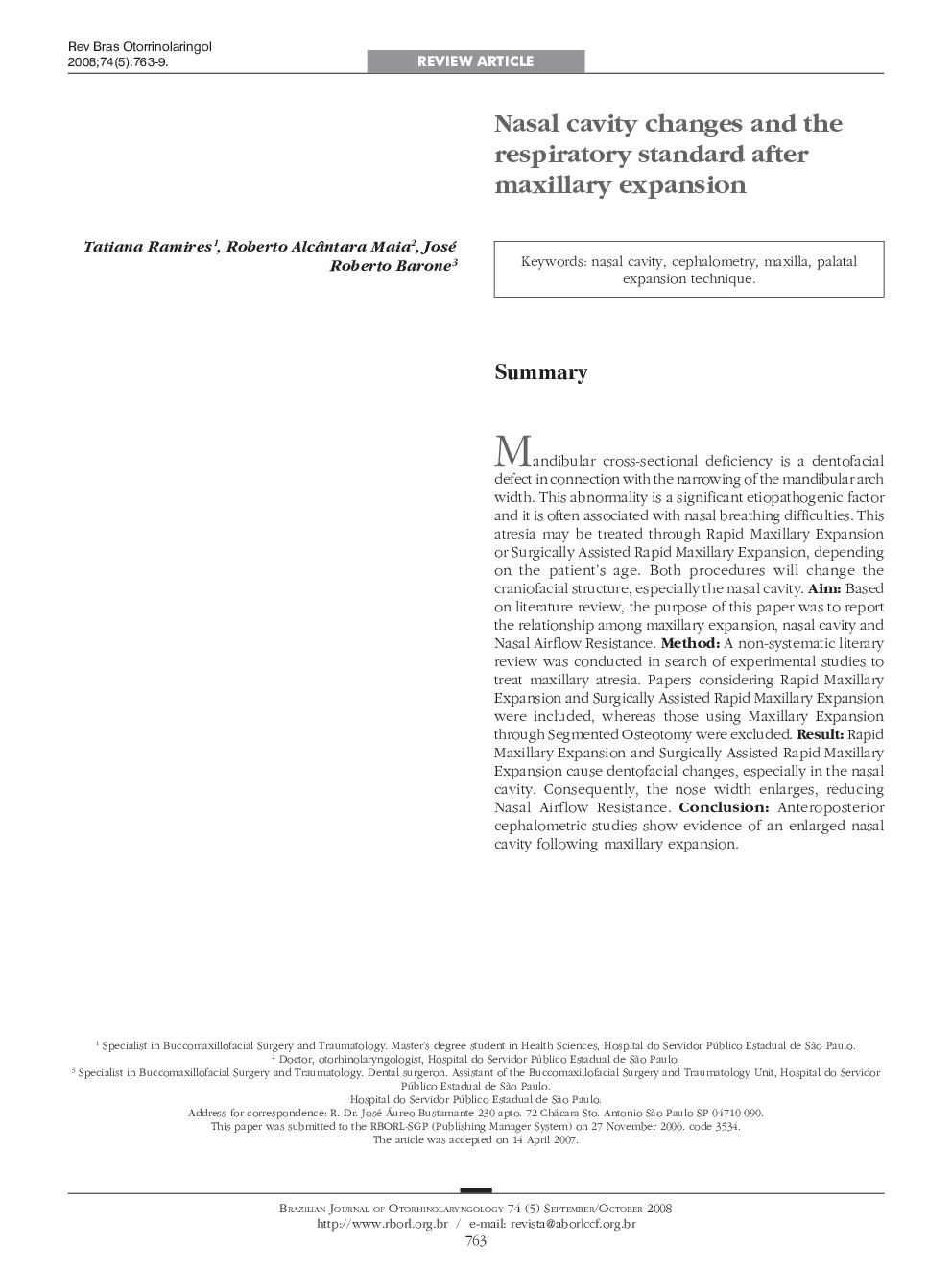| کد مقاله | کد نشریه | سال انتشار | مقاله انگلیسی | نسخه تمام متن |
|---|---|---|---|---|
| 4107034 | 1605408 | 2008 | 7 صفحه PDF | دانلود رایگان |

SummaryMandibular cross-sectional deficiency is a dentofacial defect in connection with the narrowing of the mandibular arch width. This abnormality is a significant etiopathogenic factor and it is often associated with nasal breathing difficulties. This atresia may be treated through Rapid Maxillary Expansion or Surgically Assisted Rapid Maxillary Expansion, depending on the patient’s age. Both procedures will change the craniofacial structure, especially the nasal cavity.AimBased on literature review, the purpose of this paper was to report the relationship among maxillary expansion, nasal cavity and Nasal Airflow Resistance.MethodA non-systematic literary review was conducted in search of experimental studies to treat maxillary atresia. Papers considering Rapid Maxillary Expansion and Surgically Assisted Rapid Maxillary Expansion were included, whereas those using Maxillary Expansion through Segmented Osteotomy were excluded.ResultRapid Maxillary Expansion and Surgically Assisted Rapid Maxillary Expansion cause dentofacial changes, especially in the nasal cavity. Consequently, the nose width enlarges, reducing Nasal Airflow Resistance.ConclusionAnteroposterior cephalometric studies show evidence of an enlarged nasal cavity following maxillary expansion.
Journal: Brazilian Journal of Otorhinolaryngology - Volume 74, Issue 5, September–October 2008, Pages 763–769